If you’re familiar with the Honda City, you would know that the nameplate has been around since the 1980s, and has since been redesigned several times across several generations, with the seventh (and latest) one being revealed in Thailand recently. However, if you followed the live broadcast of the new City’s launch, you might have realised the model is referred to as the fifth-generation model. Why?
To find out, let’s first take a trip down memory lane, and we begin with the first use of the “Honda City” name towards the tail-end of 1981. At the time, the nameplate was applied on a hatchback that was smaller in size than the Civic, which was in its second generation at the time.
The first-generation City was touted to customers as a more affordable alternative to the Civic, and featured a higher roof and seating position by comparison. This provided drivers with a better view out, and in turn, made it easier to manoeuvre on smaller and tighter streets.
What made the City rather unique was it was available with the Motocompo, a small motorcycle powered by a 49 cc single-cylinder engine that was designed to be folded and stored in the City’s small luggage area. This was Honda’s last-mile transport solution, as the idea was for the owner to park the City in a parking lot, and to complete the rest of the journey on to the Motocompo.
As for the hatchback itself, it initially featured a CVCC-II (also known as COMBAX, an acronym of COMpact Blazing-combustion Axiom in Japan) 1.2 litre four-cylinder engine, with Honda introducing a turbocharged version – called the City Turbo – later on with 100 PS and 147 Nm of torque. For a bit of trivia, the idea for the City Turbo came from Hirotoshi Honda, who is the son of company founder Soichiro Honda as well as the founder of Mugen Honda.
The City Turbo II that came after would feature improvements such as a larger turbo and throttle body, along with an intercooler to make 110 PS and 159 Nm. This version, nicknamed the “Bulldog,” is probably the most widely recognised by Honda fans, as it also received flared fenders, wings, side-skirts and graphics.
In 1984, the second-generation of the City was revealed, developed based on the same “Tallboy” concept as its predecessor. The new model was made to look closer to the third-generation Civic, albeit downsized to meet the size requirements that Honda were aiming for.
This generation also saw the use of Honda’s D series engines in place of the previous E series, starting with the D12A 1.2 litre four-cylinder unit with 16 valves and a single overhead camshaft (SOHC) providing 76 PS.
A facelift would come in 1989, with styling that is inspired by the fourth-generation Civic, but that’s not all. Under the bonnet, there was the newer D13C 1.3 litre engine that came with either a single carburettor or Honda’s PGM-FI fuel injection system. The second-generation model also saw the use of the “Fit” name as a trim variant, which would later be used for the Jazz for the Japanese domestic market (JDM), and it would be the last City to be built in Japan after production ended there in 1994.
Around the mid-90s, the Civic would gradually be marketed as a more premium offering in Southeast Asian markets. As such, Honda required an affordable sedan that could meet the budgets of its customers in these markets.
The project to create a dedicated sedan model specifically for ASEAN markets was handled by Honda Thailand, and to ensure research and development costs were kept within bounds, the car was based on the fourth-generation (EF) Civic’s platform – at the time, the Civic was in its fifth generation. With affordability in mind, the EF’s front double wishbones was also replaced with MacPherson struts.
The sedan would go into production at Honda Thailand’s plant in Ayutthaya, with the “City” name being reused for the new model. As such, the City sedan lineage is counted from this first-generation model that was produced by Honda Thailand in 1996, and not from the JDM City hatchback made from 1981 to 1994.
Development of the City sedan would continue to be handled by Honda Thailand, with the second-generation (GD) making its debut in 2002 – the model was also sold in Japan as the Fit Aria. The rather peculiar “turtle shell” shape is due to the City being designed as a sedan version of the Jazz/Fit developed by Honda Japan, similar to what the Mazda 2 Sedan is to its hatchback equivalent.
For the third generation of the City, Honda Thailand was given more freedom when it came to designing the sedan. While it may be based on the second-generation (GE) Jazz, the third-generation (GM2) City had a longer front overhang and wheelbase as well as a lower roof than the hatchback to give it more of sedan look.
The model also received the L15A7 1.5 litre four-cylinder i-VTEC engine that replaces the previous 1.5 litre L15A1 i-DSI and L15A2 SOHC VTEC units used on the previous generation. The CVT gearbox of its predecessor was also swapped for a conventional five-speed torque converter automatic.
For the fourth-generation (GM6) City sedan, which debuted in 2014, the concept remain unchanged, as it still had Jazz underpinning but with bespoke dimensions. The biggest change, aside from the styling, is the repositioning of the fuel tank from the middle to the rear of the vehicle. This allowed the seating position to be lowered to give a sportier driving feel, while the height of the roof also saw a reduction in the centre of gravity and provided a more athletic look.
The 1.5 litre i-VTEC continued to be used for this model, but the five-speed automatic was omitted, with a CVT making a return. However, the CVT used wasn’t directly taken from the GD-generation car, but is a redesigned version that provided better performance, with one of the enhancements being the use of torque converter instead of start clutch in the CVT.
Currently, the GM6-generation City is still available for purchase at Honda showrooms in Malaysia, but Thailand has already welcomed the fifth-generation City sedan. Marketed as the City Turbo, the model gets a total redesign inside and out, and is the first in the City sedan line-up to be powered by a turbocharged engine.
Said mill is a P10A2 1.0 litre three-cylinder VTEC Turbo unit, which is already in used in the Civic sold in European markets. The adoption of a downsized engine is necessary in Thailand if the City is to meet Thailand’s Phase 2 Eco Car framework.
In terms of output, the turbo engine – paired to CVT with seven-virtual speeds – makes 122 PS and 173 Nm, which is more than the naturally-aspired 1.5 litre engine on the fourth-generation car (120 PS and 145 Nm), and coming close to the R18Z1 1.8 litre i-VTEC SOHC (141 PS and 174 Nm) used in the current Civic we have here.
Hopefully this detailed post explains why the latest City is referred to as the fifth-generation model.
This post is adapted from an article posted on our sister site paultan.org/BM.
Looking to sell your car? Sell it with Carro.

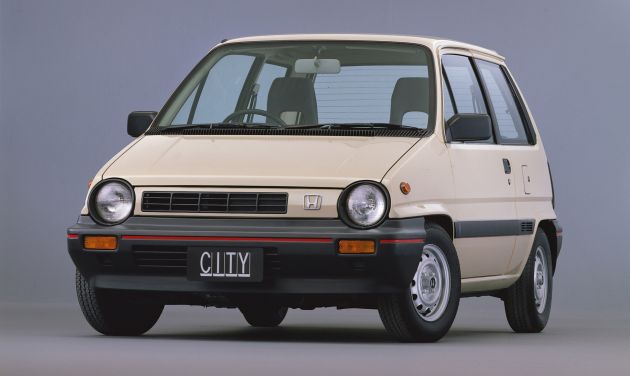











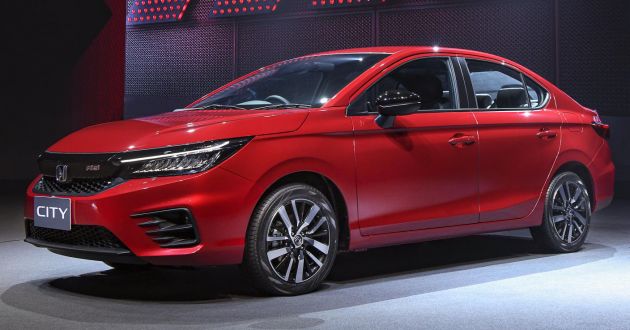

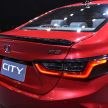









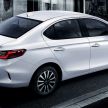
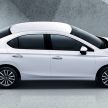
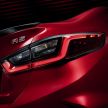
















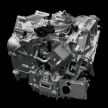

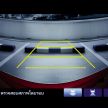

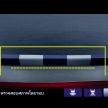

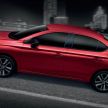


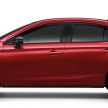
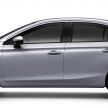
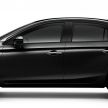

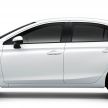
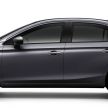























Very nice recap, thanks !!
its still ok. they totally ruined the integra name
Are we talking Japanese or Asean Honda City?
Motocompo bike, the brilliant to adopt lastmile solution!
That 2nd gen JDM City hatch looks sweet. I’ve never seen an actual one though. Very rare. Have seen the 1st gen though.